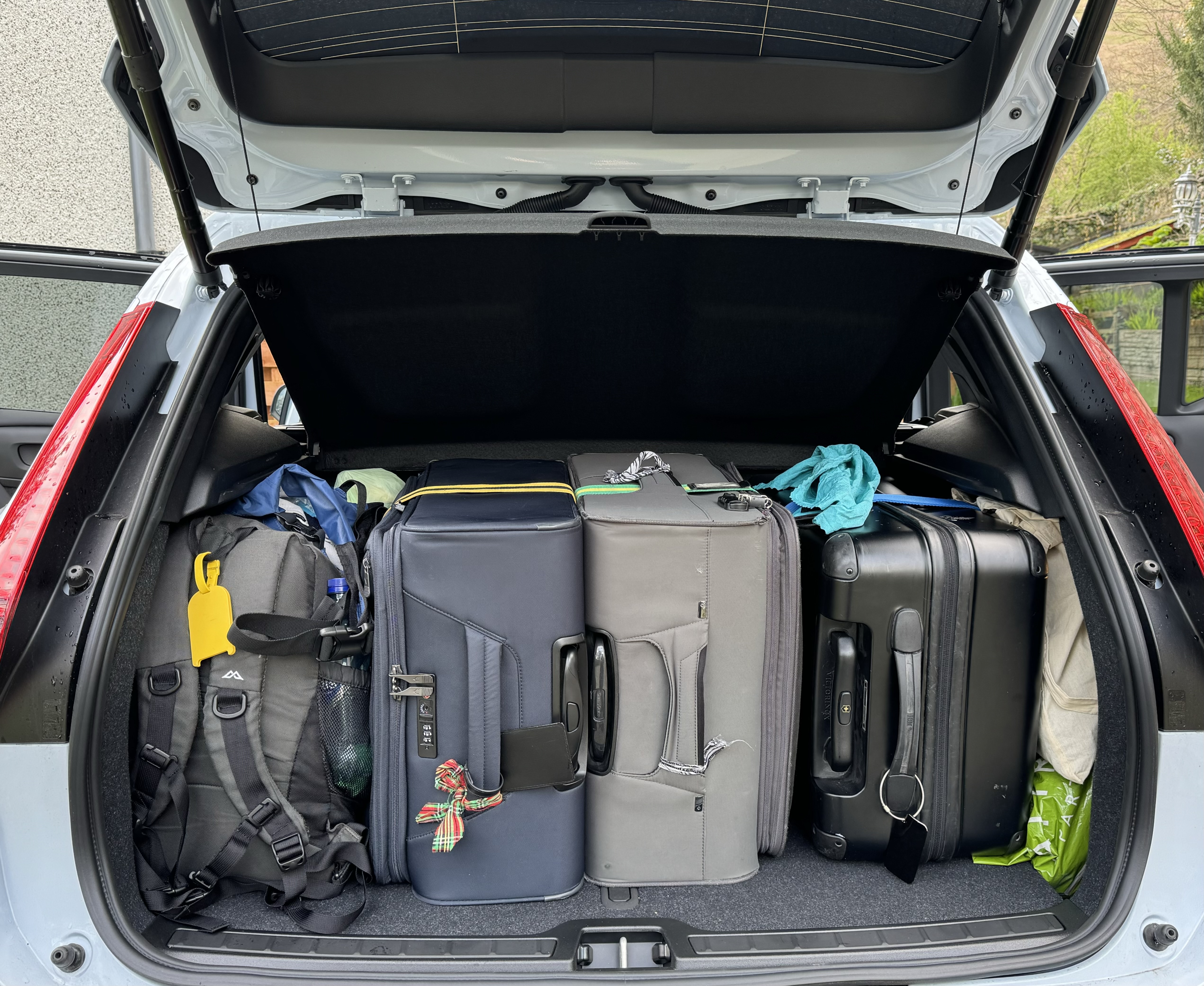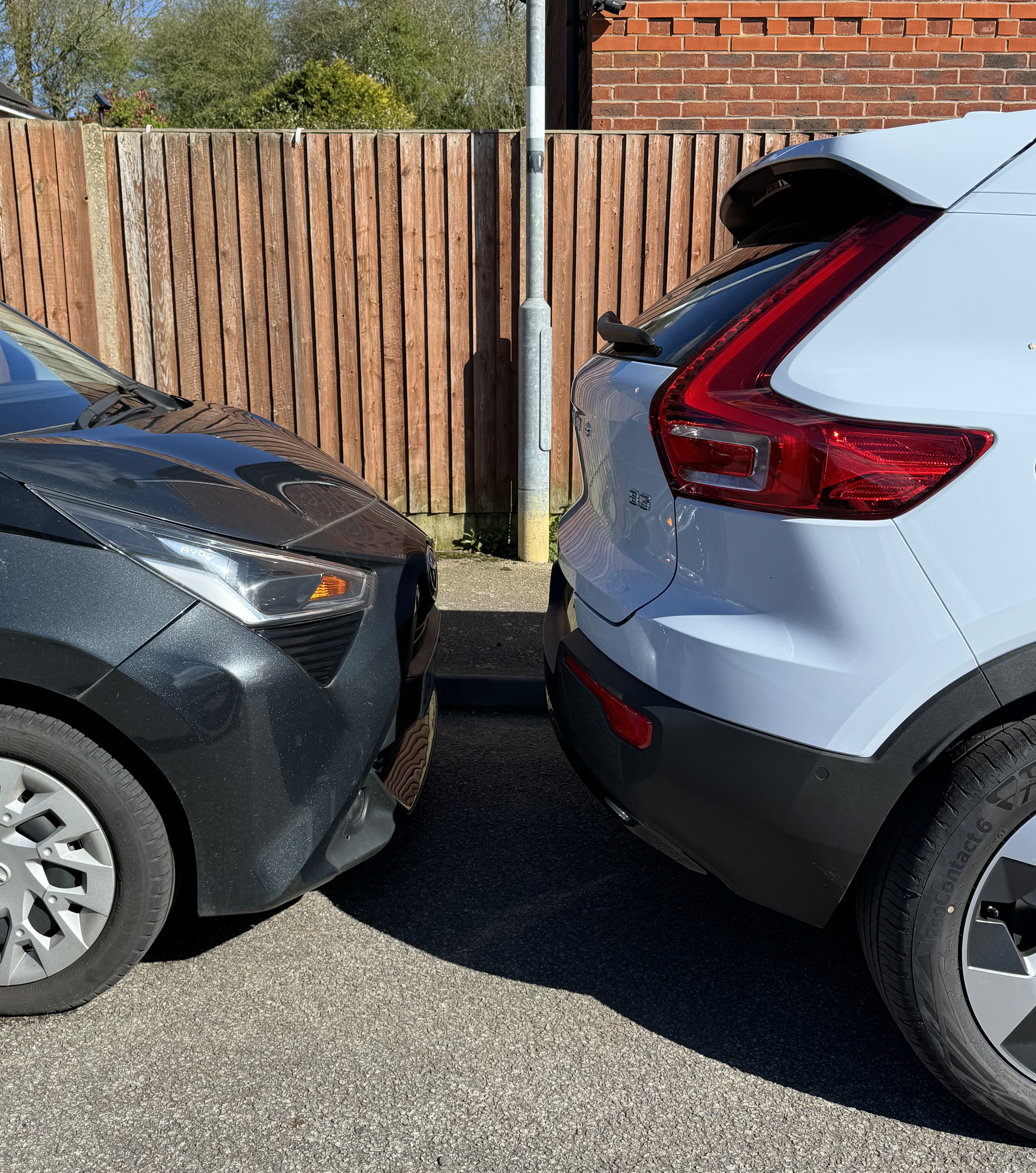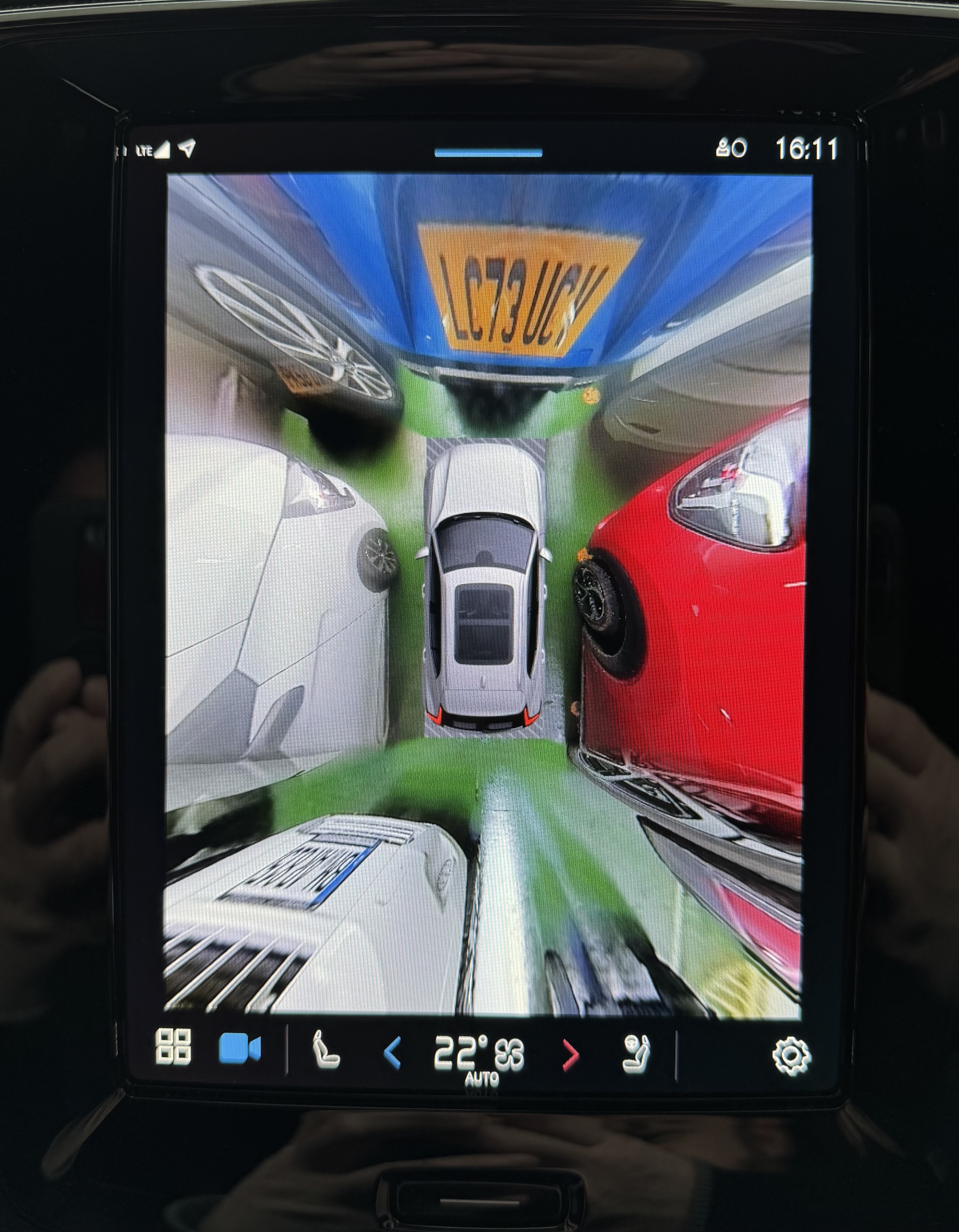Driving in Ireland and the UK
After Dublin I had booked a hire car and planed to drive across Ireland to Galway, down the Killarney, and then to Cork to fly back to the UK. As I was waiting in the queue to check out of the hotel I started ordering a taxi on my phone and by the time I was manoeuvering my bags through the doors the taxi was out the front and ready to help get my suitcase into the boot.
“Sorry it isn’t very far, just up to the car rental place, but I didn’t want to drag my bag that far.”
“Oh, no problem at all! You wouldn’t want walk to there from here. Oh no.”
(That was typed in a stereotypical, but completely respectful, Irish accent. He was very friendly and chatty.)
“So where are you off to now?”
“Oh, Galway tonight, then down the cost.”
“Oh! You’re braving our rural roads! Ohh, bless you!”
makes the Sign of the Cross
I entered the Budget office. The counter had two terminals, but only one of being used, though there were three people behind the desk. Two were clearly supervising each other while one actually served people.
My car for the next few days was a 2023 Toyota Yaris. A perfectly reasonable car for just me. Enough room in the boot for my suitcase and backpack. Small enough to easily fit down small Irish streets. It had Apple Car Play and a USB-A port (Yay for the USB-A cable I specifically brought with me for legacy ports 🤣).
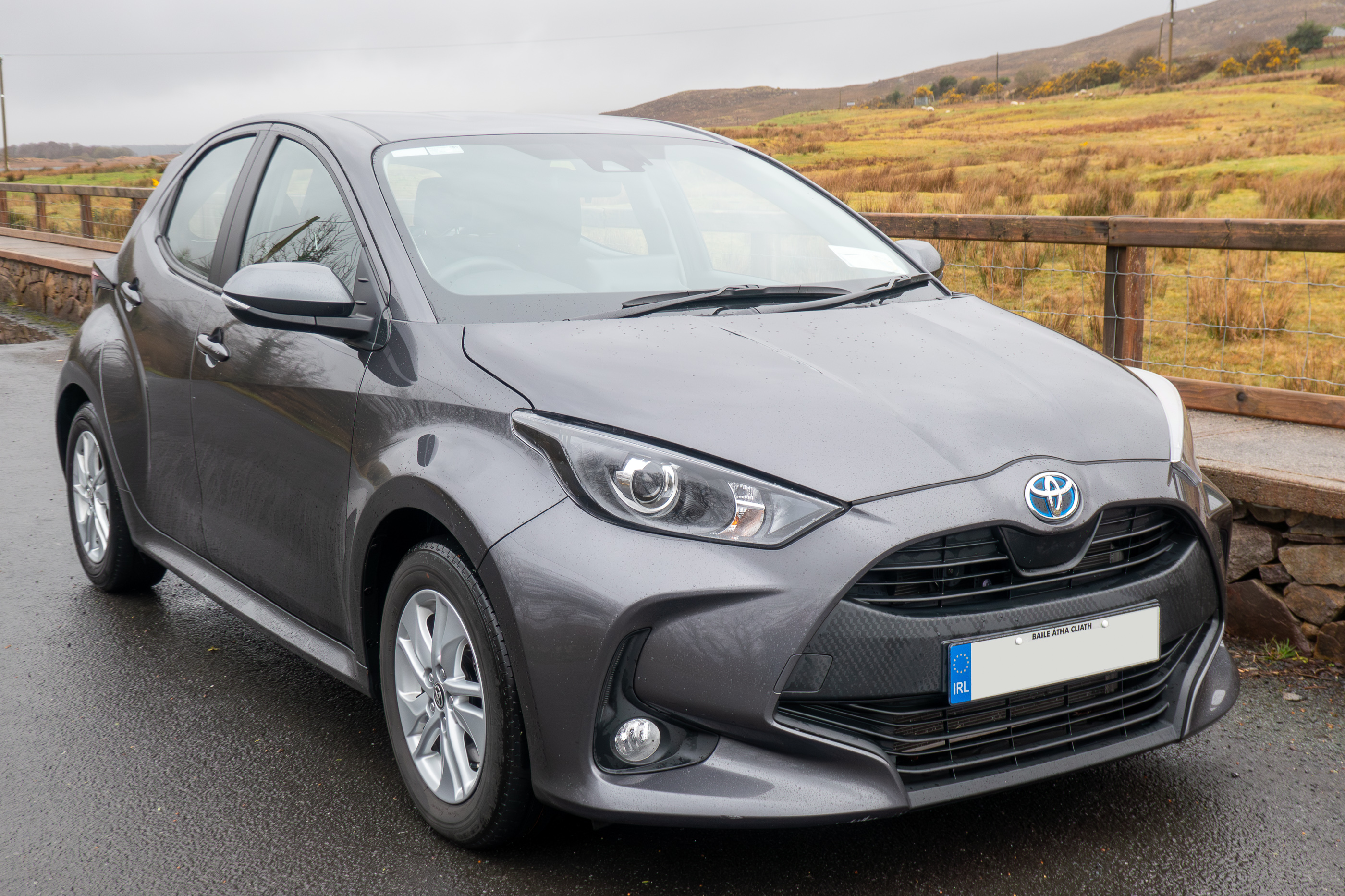 The Yaris in Ireland, where it would sometimes rain.
The Yaris in Ireland, where it would sometimes rain.
The powertrain was a 1.5L hybrid. The “tachometer” goes from ‘Off’ to ‘Charge’ (re-gen braking / coasting down hills) to ‘Eco’ to ‘Power’ - and honestly it spent most of the time in Eco, only occasionally popping up into ‘Power’ when overtaking or joining a motorway. I like driving Toyota hybrid cars (I have driven my dad’s Prius quite a lot), it gives you a score at the end of your drive and it’s fun to get a better score each time 😁
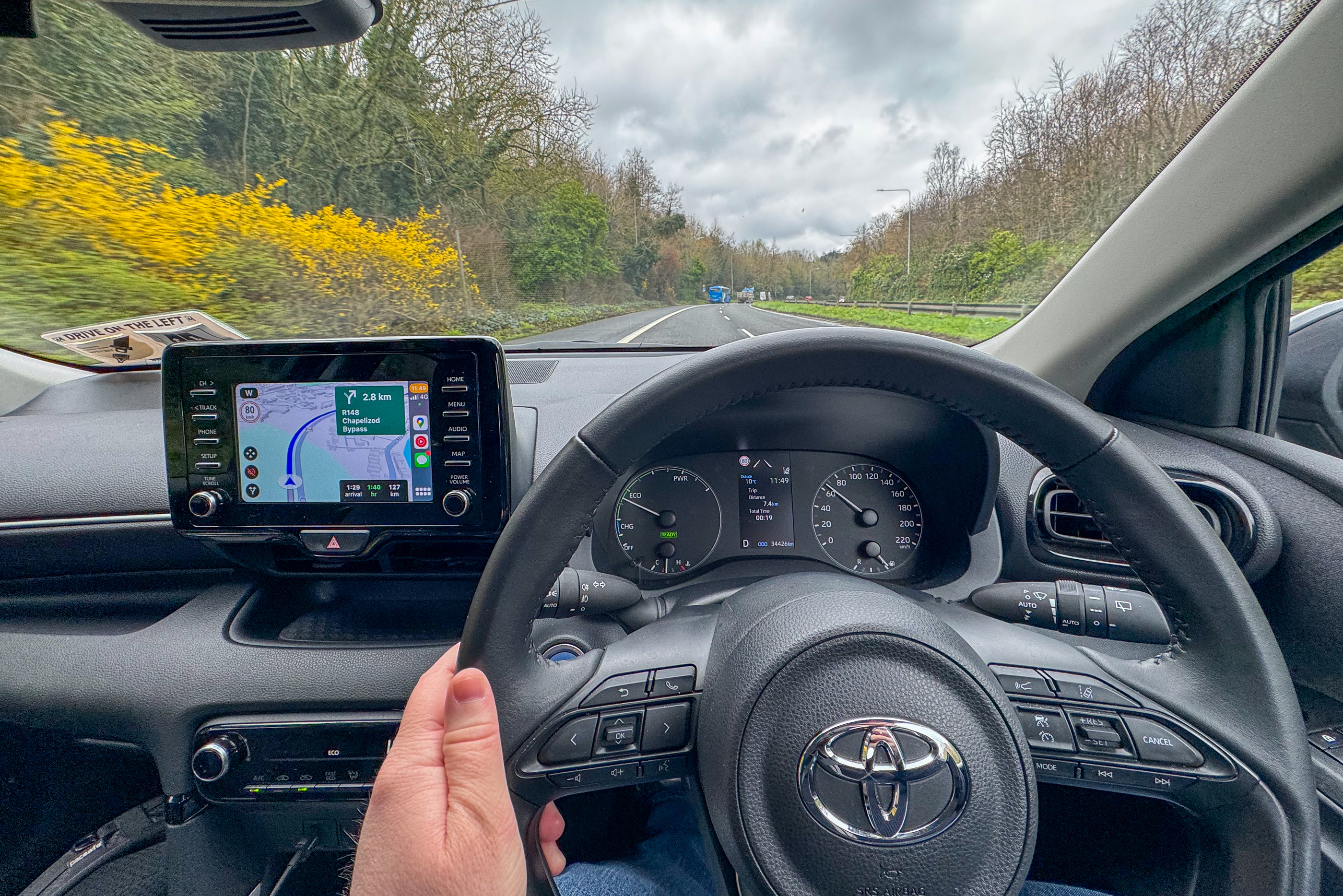 It is not possible to know how fast the engine is going.
It is not possible to know how fast the engine is going.
In contrast, in England when we went to pickup our rental car for three of us, with three suitcases the car rental person was very concerned we wouldn’t fit in the car we had ordered. He offered us the keys to several cars and told us we could take our pick if we wanted a bigger one. I got in the front seat, dad got in the back and we decided there was no way we were going to get three suitcases in the boot, and having the third suitcase in the backseat for extended drives was not ideal. I am not unaware that the car rental person was very much invested in us choosing a larger and more expensive car, but after a few weeks of driving, the extra cost of the Volvo XC40 was well worth it.
Unlike my Volvo at home, this was a hybrid. I still don’t completely understand how the Volvo ‘Mild Hybrid’ setup works, but I think it is similar to my Subaru XV. You turn the car on and the engine starts. You back out of your garage slowly and the engine is running. You are cruising slightly downhill on a highway doing 100km/h and the engine stops and it uses the battery for a bit. Unlike my Subaru, this was not a naturally aspirated engine, and when accelerating who could hear the subtle whistle of a turbo 😌
And unlike my car at home and the little Yaris in Ireland it was lacking what I would consider the bare minimum of safety and driver aids in a car built in 2024. The cruise control was from the 90’s with no radar / distance keeping. No blind spot monitoring. No cross traffic detection. I didn’t even know you could buy a Volvo in 2024 without these features.
That little Yaris really is fantastic value.
When collecting the small mountain of paperwork for the Yaris I was warned that there were toll roads around Dublin and elsewhere. It took me at least two days to notice I had accidentally selected ‘Avoid Toll Roads’ in Google Maps on my phone. This was great because I didn’t have to negotiate either a toll booth or a strange website to pay the rolls, and the directions would randomly take me off the motorway and send me down some very enjoyable rural roads.
 Typical Irish Country Lane - no tolls
Typical Irish Country Lane - no tolls
A lot of Ireland felt like driving in an asphalt stage in a rally video game, nice flowing gentle curves, clearly defined edges to the roads with hedges, drystone walls, trees. I did seem to spend quite a lot of time enjoying the country roads. The car rental place had handed me a stack of papers, including something about toll roads in Ireland, particularly around Dublin. It took me a full 2 days of driving to realise I had the setting in Google Maps to avoid toll roads. I had wondered, briefly, why I would be cruising down the motor way only for the directions from the maps to exit, travel somewhat parallel with the motorway for a while, through a couple of roundabouts, and then back onto the motorway a while later. I figured that was just ‘the way’ - I didn’t have a clue where I was going. When I did realise this I checked what the difference paying tolls would meant in time. On the first day it would have saved my around 8 minutes in just over 2 hours of driving. I figured at this point it was easier to just not pay tolls, and not work out how to pay tolls and continue to enjoy the country roads.
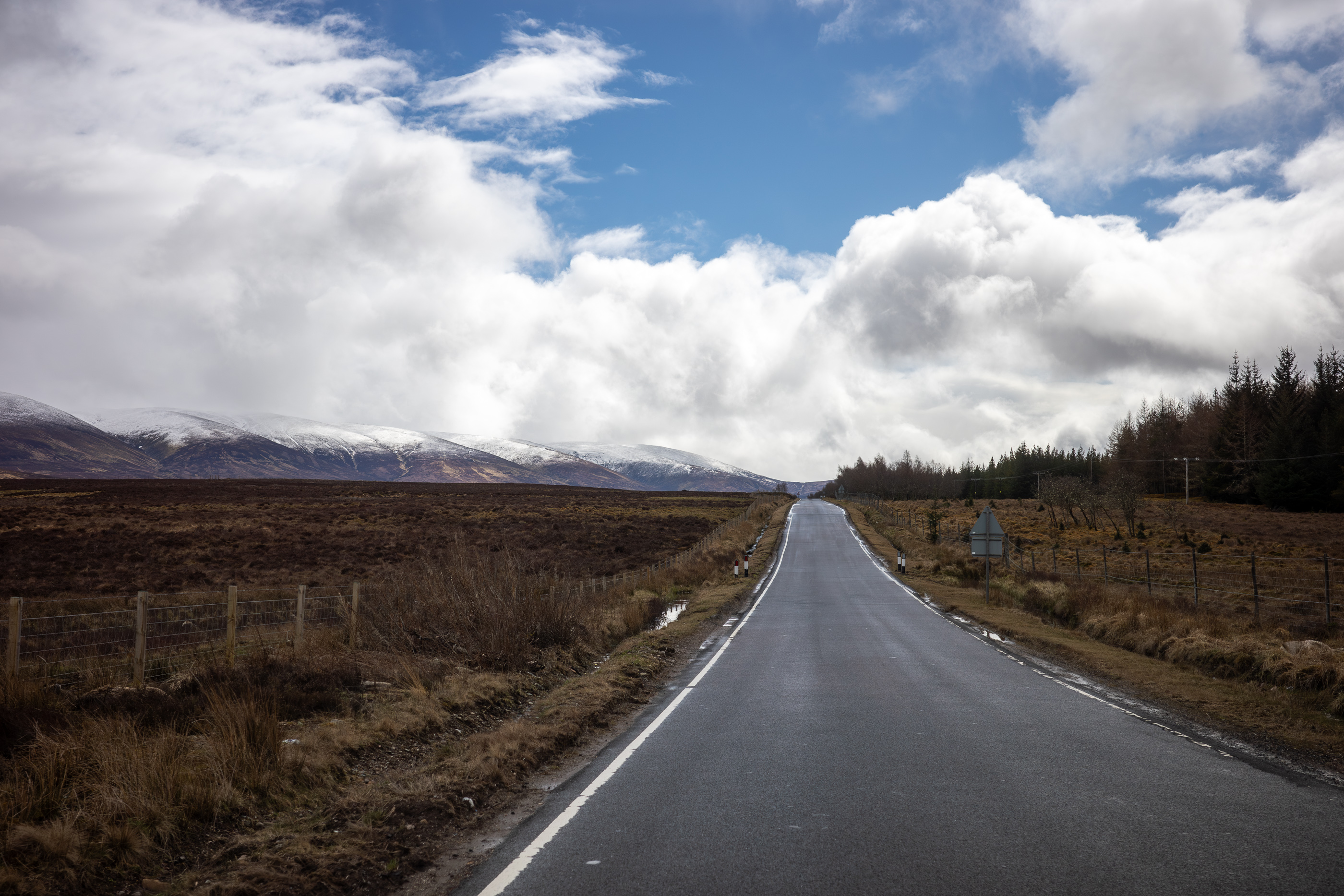 The Scottish Highlands - a single lane A road.
The Scottish Highlands - a single lane A road.
The other thing I was enjoying while driving around somewhere completely unfamiliar to me was listening to music. I usually listen to podcasts while driving back home. It is one of the few opportunities I have to catch up on the ever growing Up Next playlist in Pocket Casts. But needing to concentrate more on where I was going and following directions I know I would just tune out whatever podcast I was listening to, get annoyed that I missed something, rewind 5 minutes, repeat 😒
I have an old playlist in YouTube Music called ‘Car’ that has followed me around between music services. Every so often I add something I am enjoying to the end of it. (I have several of these playlists. Like ‘New new new Music’ which doesn’t have anything release after 2012.) My music listening habits are “they stopped making good music in the early 2000s” and “background electronica I can zone out to while working.”
Every so often some new music does break in / an artist from the 90s releases something new.
Car is mainly Broken Bells, Peter Bjorn and John, and Let England Shake by PJ Harvey - the most recent thing added to this playlist 🫣
When driving with my parents in the UK it was mostly in silence, with the occasional beep from the car letting you know you had dared to hit 21 miles per hour in a 20 zone - you were of course traveling at something closer to 19 miles per hour, but the speedo had registered 21 and it would beep at you until you went slower than 20. Not 20, slower than 20. Sometimes, just for fun it would beep at you if you were doing 20 in a 20 zone.
The speed warning seemed to be based mostly on what speed signs the car would see. This could sometimes be an issue. Either it would pick up a speed limit sign on a motorway exit you didn’t take, warning you to slow to 50, when you were still moving at 70 with everyone else who also hadn’t exited a motorway, or it would fail to recognise the ‘end of speed limits through a village’ sign on A or B roads and think you should still be doing 30 instead of 50. It would eventually get bored of beeping and shut up.
The other time the car would beep at us would be when we got too close to something. While it didn’t have blind spot monitoring or radar for the cruise control, it did have ultrasonic sensors for parking (and a 360 camera). These were very useful when trying squeeze into small parking spot, but they would sometimes go off when we were driving!
This wasn’t an issue with the car, but rather there were some “traffic calming measures” which were basically some bollards in the middle of the road just wide enough to get through, but you would crawl through at like 5 miles per hour.
Sometimes when we were traveling down a “two way” street barely wide enough for one car, with other cars parked either side and then someone else comes the other way. Both cars would slow to a crawl and do a little dance in the middle of the street to get around each other and the parking sensors would go off and the 360 degree camera would turn itself on. It also did this when parking on the ferry over to The Isle of Skye, but this was kind of understandable.
When we weren’t crawling around a town or village looking for parking spots, I would put on some podcasts we could all enjoy. This was mainly alternate episodes of Lateral with Tom Scott or Something Rhymes With Purple - we really are just a bunch of nerds.
One of the good things about the Volvo is the built-in Google Maps as part of Android Automotive, it does mean not needing to connect a phone or be worried about your data connection. While Google Maps was pretty good at getting us around, including telling us which exit of a roundabout to use - we would all count out the exits as we go past them.
“One, two, three. This one!” It was the role of the front passenger to point at the exits, like a navigator in rally car.
Where Google Maps really struggled was picking a lane. It would confidently tell you to “turn right from either of the two right lanes,” however that was impossible, because only one of the two right lanes would turn right. Or “turn left from the middle lane,” but the middle lane is forced to go straight. On more than one occasion we did more than one lap of a block because I trusted a lane direction and was unable to correct for it before getting stuck in the wrong one-way street. Often there would be markings on the road letting you know which lane you should be in, but that didn’t stop lanes disappearing halfway through an intersection.
As responsible drivers we would always use our indicators to let other vehicles know when we were about to take an exit on a roundabout, or dive across several lanes of traffic. We would also use an indicator when entering a roundabout if we were making a left or right turn. And, contrary to every other driver in the UK we would also use our indicators at intersections to, again, let our intention known to other drivers. We sat in a right hand turn lane at an intersection with traffic lights, waited for a green arrow for the right-hand turn, and then watched every car in front of us make the turn without ever using their indicator.
The use of indicators also seems to be optional on motorways.
British motorways are a strange place. They generally work pretty well, even when there were a lot of roadworks it was rare to be completely stopped, everyone just continues slowly. Will this stretch on the M25 take me 25 minutes or 2 and a half hours? There is no way to know!
There are four distinct groups of drivers on motorways. Those who want to cruise 5 to 10 miles per hour under the speed limit. Trucks, which are limited to 60 miles per hour. Those who are happy to cruise along at the speed limit, and finally those who believe it is their right to drive 10 to 15 miles over the speed limit at all times regardless of the traffic or conditions.
Usually the four groups travel harmoniously on four lane motorways. There can be issues when the four groups, traveling at different speeds, are forced to share two or less lanes. This leads to frequent lane changes as everyone attempts to leap-frog everyone else. Then despite the urge for many to stick to 80mph in the outside lane, even they will tend to merge back left after overtaking, and when they do they do it quickly, without indicating. They’ll be barely past you before they swerve back into the left lane and you’ll be thankful your car doesn’t have radar cruise control because it would have slammed on the breaks when a car suddenly appears from nowhere in front of you, only for it to slow, every so slow move away from you.
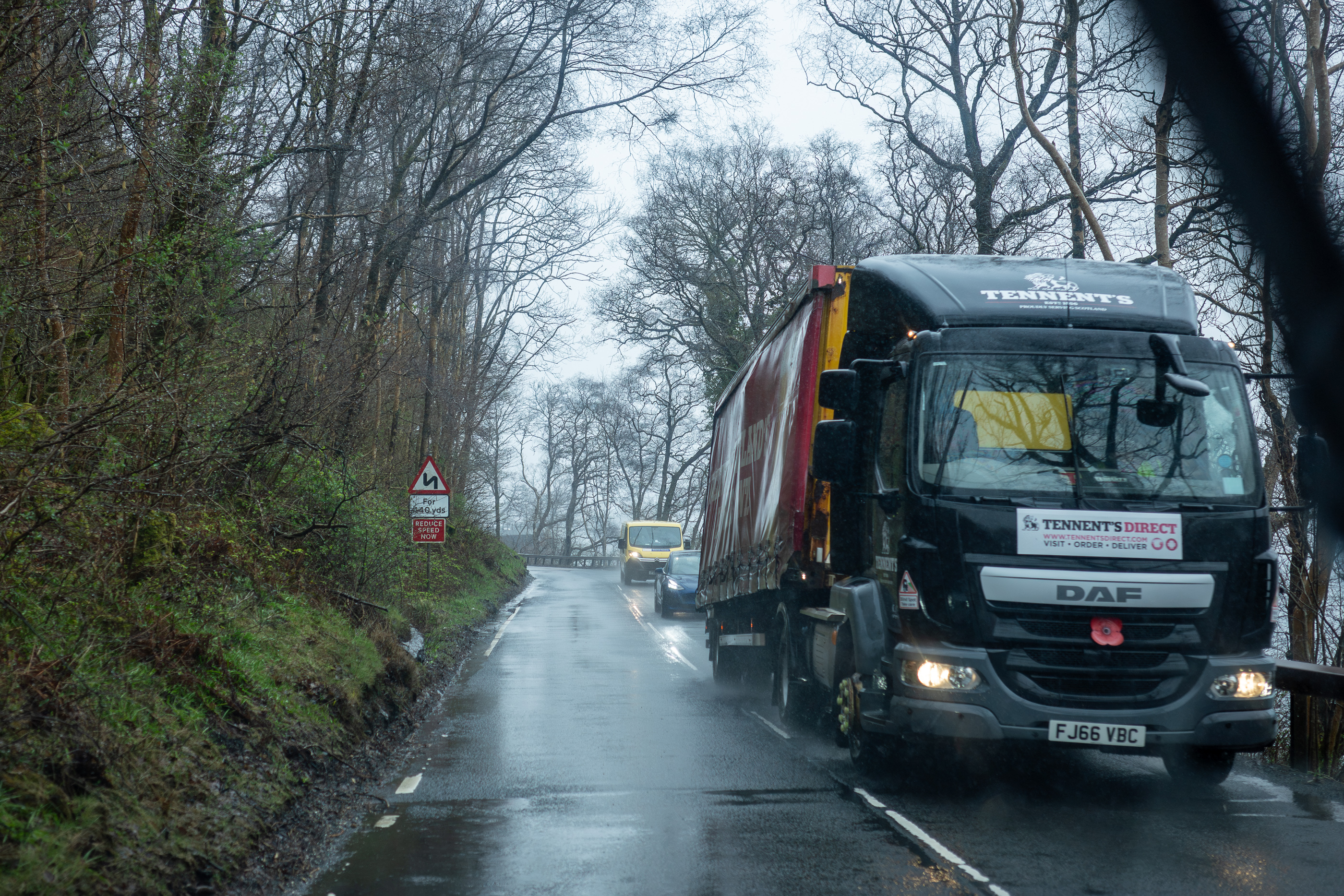 Somewtimes it rains in Scotland.
Somewtimes it rains in Scotland.
The belief that speed limits are only a suggestion and only apply to others, the belief that indicators are optional and a waste of time might lead you to believe that most drivers in the UK are thoroughly unpleasant people. However underneath all of this there is something else. Drivers in the UK give way when people are trying to merge. Drivers in the UK will flash their lights to oncoming drivers to let the know they can turn right in front of them because they are slowing down. Drivers in the UK will stop to let cars stuck trying to turn right out of a side street onto a main road get out.
Just don’t try and do less than 80 in the right lane on a two-lane motorway.
